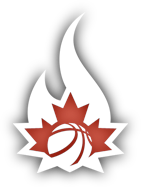Philip Scrubb had a 9:30 a.m. interview in the Carleton University athletics building. At 9:27, he was still playing 1-on-1 in the gym.
Every shot and crossover dribble represented a chance to improve, even for a talented athlete named Canada’s top university basketball player three times.
That kind of drive made five-time champions of Scrubb and his brother Thomas and made the Carleton Ravens the gold standard for Canadian Interuniversity Sport men’s basketball with 11 titles in 13 years.
Whether there will be more like them, however, is the question.
“I don’t know where (Canadian university basketball) is going,” says head coach Dave Smart, the driven force behind the Ravens’ success. “That’s up to the powers that be: the presidents and the athletic directors. Certainly at our place and a number of schools in the country, it’s going in a positive direction.
“The presidents are very much behind basketball being a major part of their university experience for the students and the reputation of the school. I’m not sure that’s necessarily the case everywhere in the country. We need as many presidents of schools on board with that as possible.”
A general surge in interest in university men’s basketball across Canada is reflected by the addition of a half-dozen new teams in the Canada West conference within the past decade and the net gain of one in Ontario, which lost Royal Military College, but added Algoma and Nipissing.
The downside, though, is a growing migration of talent to the United States.
Steve Konchalski of St. Francis Xavier University recalls talking with Leo Rautins about the NCAA career of the broadcaster and former NBA player from Toronto in the 1980s.
“When he was at Syracuse, he was a Canadian and everybody was, ‘Wow, there’s a Canadian on your team! What’s that all about?” says Konchalski, a 40-year coaching veteran and three-time CIS champion with the X-Men from Antigonish, N.S. “Now, if you don’t have a Canadian, they say, ‘Well, why don’t you have a Canadian? They’re that good!’ ”
Athletic scholarships offering free education are a significant factor, but Windsor Lancers coach Chris Oliver says bigger facilities at U.S. schools and add-ons such as academic supports and strength and conditioning coaches matter, too. CIS programs are slowly adding those perks, with some teams even hiring full-time assistant coaches, Oliver says, but recruiting is an uphill fight.

“A lot of us still recruit whatever we can beyond the top-50-level (prospects) because you never know how their experience is going to work out in the U.S.,” Oliver says. “Within the four years they’re there, the odds are they’re not going to end up playing for the coach that recruited them, just by the nature of the business in the NCAA. You’re successful and you’re moving on, or you’re not successful and you’re getting fired. I think that’s another strong suit of the CIS: There’s a good chance you’re going to play for the same coach for the four, five years you’re at university.
“So there’s different things we can sell, but, at the end of the day, if I’m in Ontario, I have no way around the concept of free education and free scholarship. Until we get to that point, I don’t think we can truly recruit for that next 50 to 100 players that are considering the NCAA as an option.”
Smart says CIS basketball needs marketing and scholarships. He says the best prospects will still likely end up with major U.S. college powers, but Canadians attending “mid-majors” would be better off staying at home, he believes.

“To be frank, the Canadian mid-major kids that go down there, it’s over for them,” Smart says. “I coached the national team. None of those guys, when their four years are done, is good enough to play on the national team, whereas there are some CIS guys who are right on the brink of being in that 15.
“It’s hurting our game, but it’s hurting those kids as well.”
Konchalski and others hope something comes from a CIS women’s hockey pilot project allowing schools to offer individual athletes enough for tuition, fees and residence or living costs even if the total per team remains unchanged. That project is only in the first of five years, though, far from the point of a cost-benefit analysis on whether it has had the intended impact of keeping more Canadian student-athletes at home.
There is a perception that CIS basketball is inferior to the NCAA’s. Smart and Victoria Vikes coach Craig Beaucamp share the viewpoint that there’s less parity within Canadian conferences than there used to be, but they also say the better Canadian sides can compete with U.S. teams. Carleton is 15-17 against U.S. teams in the past five years, while the University of Ottawa Gee-Gees are 5-11.
The biggest mismatch, CIS coaches say, is in exposure to fans.
Even network basketball priorities lie with the NBA and NCAA. Try finding a telecast of a CIS contest prior to the national championship.
The situation might even have been better before, says Konchalski, who has been around long enough to remember when national team coach Jack Donohue provided colour commentary for weekly game broadcasts in the 1970s.
“How many people are seeing our product on a regular basis?” Beaucamp says. “With television comes more money, and with more money comes a product that competes with the product down south.”
Smart adds: “It’s not necessarily the actual product on TV, just that we’re never on.”

